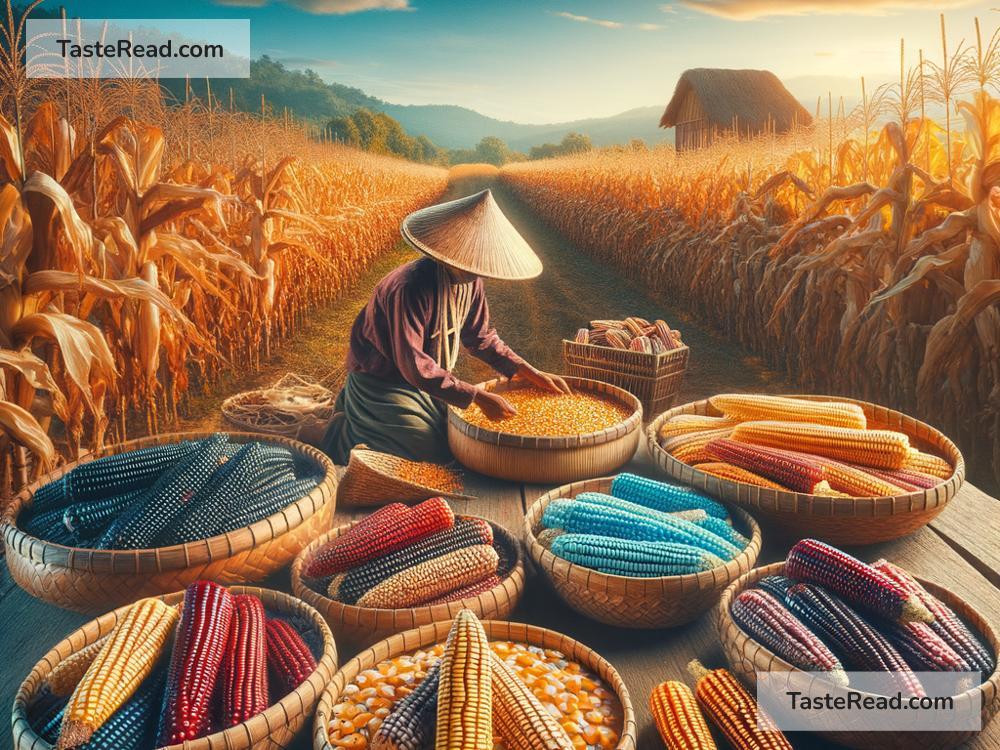The Fascinating History of Corn as a Sacred Crop
Corn, or maize, is one of the most important crops in the world today. It provides food for millions of people and animals, and it’s used in countless products like cereals, oils, and even fuels. But did you know that this humble grain has a deep and sacred history that goes back thousands of years? For ancient cultures, corn was not just food—it was a symbol of life, a gift from the gods, and a source of connection to the Earth.
The Origins of Corn
Corn didn’t always look like the large, golden ears we see today. Scientists believe that it was first domesticated about 9,000 years ago in what is now central Mexico. Its ancestor was a wild grass called teosinte. Early farmers in the region began to selectively breed teosinte, choosing plants with larger kernels and sweeter tastes, eventually transforming it into the corn we know today.
Corn quickly became the cornerstone of agriculture across the Americas. Its versatility allowed it to grow in different climates and environments, from the dry deserts of the Southwest to the lush forests of the Amazon. As more people relied on corn for survival, it also became deeply intertwined with their spiritual and cultural traditions.
Corn as a Sacred Gift in Mesoamerican Cultures
For the civilizations of Mesoamerica, such as the Maya and the Aztecs, corn was much more than food—it was sacred. According to their creation myths, humans were made from corn. The Maya believed that the gods created the first humans from maize dough, and this is why it became the central crop of their lives. They saw corn as a direct gift from Mother Earth, and its growth cycles were tied to the seasons and their spiritual practices.
Corn also played a central role in ceremonies and rituals. The Aztec god Quetzalcoatl was said to have given corn to humans, teaching them how to cultivate and honor it. This was celebrated in festivals that thanked the gods for a good harvest and asked for protection against famine. Priests often used corn in offerings, combining it with cocoa, honey, and other sacred items.
The planting and harvesting of corn were closely tied to the patterns of nature. Farmers performed rituals before sowing the seeds, asking for abundant rains and fertile soil. When harvest time came, ceremonies celebrated the Earth’s generosity, honoring corn as both the giver and sustainer of life.
Corn as a Symbol in Indigenous North American Cultures
In North America, Indigenous peoples also held corn as a sacred crop. The “Three Sisters” agricultural system, practiced by many Native American tribes, highlights the interconnected importance of corn, beans, and squash. These crops were planted together because they helped each other grow—corn provided support for the beans to climb, beans enriched the soil, and squash acted as a natural ground cover to keep moisture in and prevent weeds. This harmony reflected the Native belief in balance and cooperation with nature.
Corn was deeply tied to storytelling, traditions, and spirituality. For the Iroquois, it was one of the Gifts of the Great Spirit and part of their Thanksgiving Ceremony, held to express gratitude for the harvest. Among the Hopi people, corn was seen as a “life force,” connecting humans to the spirit world. Different colors of corn—white, blue, yellow, red, and black—represented various aspects of spiritual life and the natural world.
Corn kernels were often used in medicine, decoration, and even prophecy. Some tribes believed that the way kernels fell could predict future events, making corn a tool for divination.
The Spread of Corn Across the World
Corn’s sacred status didn’t prevent it from becoming a globally significant crop. When European explorers arrived in the Americas in the late 1400s, they encountered corn for the first time. They were amazed by its abundance and adaptability. The Spanish and Portuguese brought corn back to Europe, where it quickly spread to Africa, Asia, and other parts of the world.
While corn’s spiritual significance diminished as it became a commodity, traces of its sacred history remain. Today, corn festivals, harvest celebrations, and Indigenous food traditions remind us of the crop’s ancient importance.
Corn Today: A Link to History
Corn’s incredible journey from a wild grass to a sacred crop to a worldwide staple is a story of survival, innovation, and connection. For the ancient peoples of the Americas, it was a symbol of life itself—a gift from the gods that nourished both body and soul.
Even today, corn remains an iconic crop. Its history is celebrated in festivals, rituals, and stories throughout the world. Learning about corn’s sacred past helps us appreciate not only the hard work of early farmers but also the deep ties between people, plants, and the land.
Next time you bite into an ear of corn or enjoy a bowl of popcorn, think about the rich history behind this simple grain. It has traveled through time, fed civilizations, inspired traditions, and continues to play an important role in our lives. Corn is more than just food—it’s a link to the sacred past and a reminder of humanity’s enduring connection to nature.


